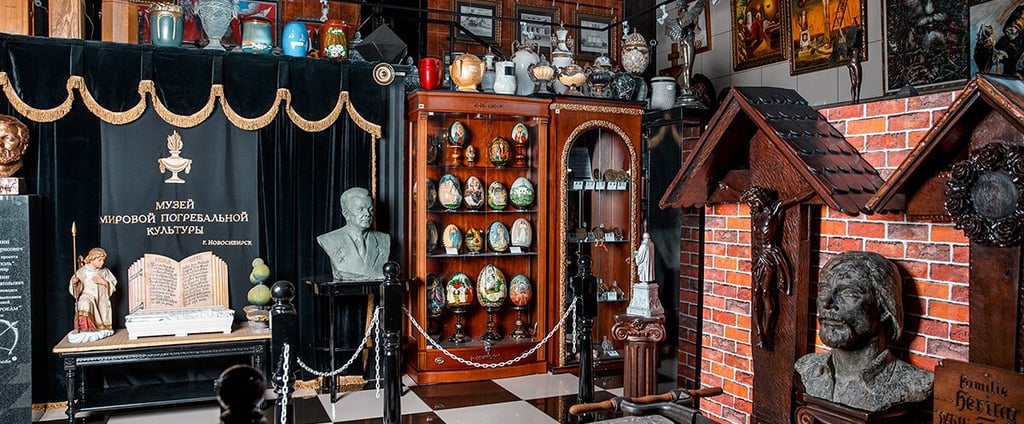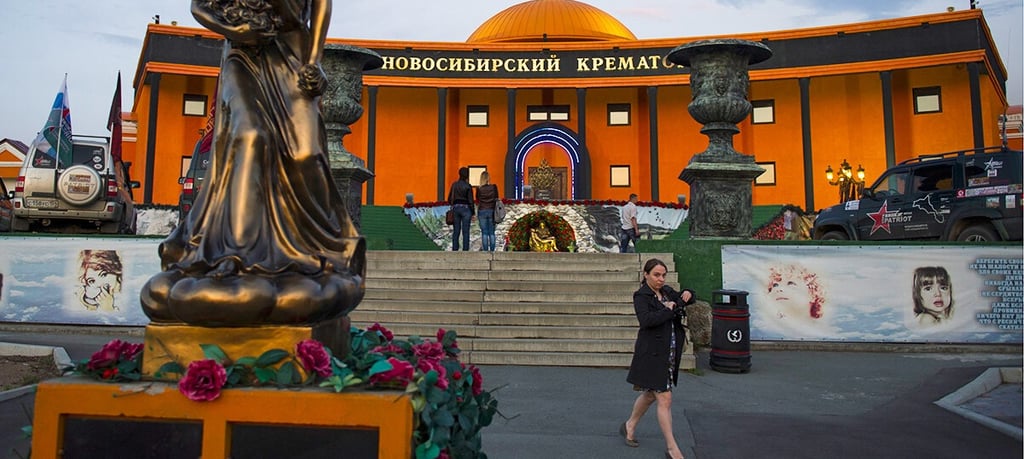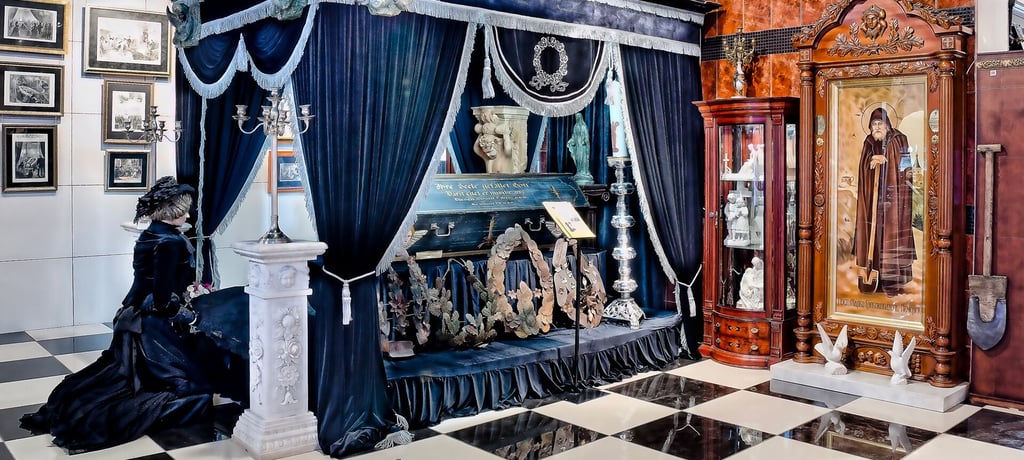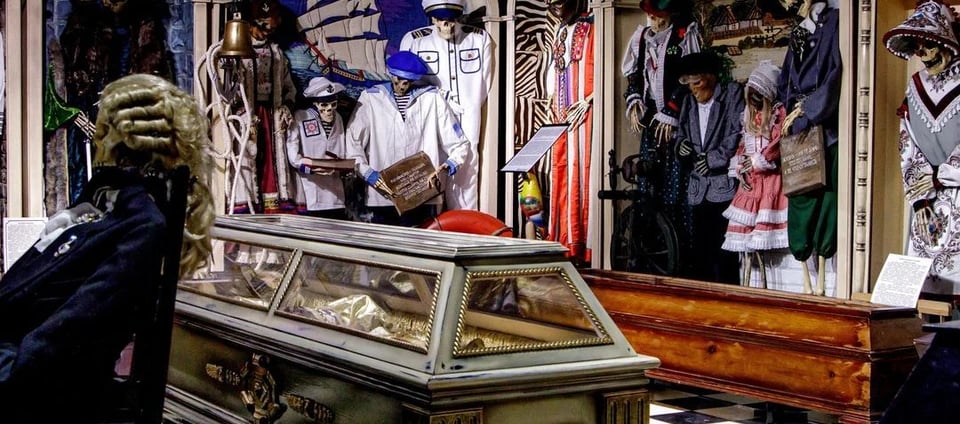Museum of World Funeral Culture
A poetic and immersive look into mortality’s mirror — exploring grief, memory, and ceremony across centuries.


A Sanctuary Beyond Fear
In the eastern reaches of Siberia, adjacent to the stoic chimneys of the Novosibirsk Crematorium, lies a sanctuary unlike any other: the Museum of World Funeral Culture. Here, the chasm between life and death is bridged not by silence, but by stories—of mourning rituals, artistic funerary artifacts, and ancient reverence. This private museum—one of only a few globally dedicated to the art and anthropology of death—is more than a mausoleum of relics. It is a hymn to memory, encouraging us to confront impermanence with courage, dignity, and respect.
Origins and Vision of the Museum
Conceived and brought to life by entrepreneur Sergey Yakushin at the site of Russia’s first private crematorium, the museum emerged in the early 21st century. His collection began modestly: five engravings of English funeral processions, acquired to decorate the nascent museum. But these initial treasures illuminated a dormant fascination—soon ballooning into a vast anthology of funerary culture that spans millennia and continents.
With more than 10,000 engravings capturing burial scenes, grief, and memorial practices; 200 historical funeral garments; a thousand paintings by modern artists probing life and death; and nearly 9,000 period photographs, the museum offers a tapestry of human approaches to mortality. Hair wreaths, post-mortem masks, ornate hearses—each artifact is a portal into rituals that have shaped human existence across time and place.
Yakushin’s purpose is clear: this museum exists not to shock or alarm sensibilities but to transform them. Designed for younger generations, it offers a space to ask difficult questions—about grieving, ancestors, and the fragility of life—while instilling resilience and reverence.
Practical Visitor Information
Location: Situated in Voskhod, near Novosibirsk, Russia (postal code 630530), the museum is part of the Memory Park adjacent to the city’s private crematorium en.wikipedia.org.
Hours & Access: Open daily except Mondays; typical visiting hours are 10 am to 6 pm (though visitors are advised to check current schedules on the official website). Guided tours are available in Russian and sometimes in English for international visitors.
Admission: There is an entrance fee, with reduced rates for students, seniors, and families. Audio guide rental is optional. Special events—such as “Night of Museums” or theatrical readings—occur throughout the year.
Getting There: The museum is accessible via city bus or private car. Free parking is available onsite. The nearest train station in Novosibirsk connects to regional public transit routes.
Facilities: The museum offers a small café serving tea and light snacks, a gift shop stocked with books on death culture and handcrafted memorabilia, and restrooms equipped for visitors.
Accessibility: The museum is wheelchair accessible with ramps and lifts. Most exhibits feature descriptive plaques; audio guides offer extended narratives. For hearing-impaired guests, written transcripts of guides and museum commentary are available.
Visitor Notes: For photo-savvy guests, personal photography is generally allowed, though flash and tripods are restricted. Silence and reflection are requested: the museum is a place of respect. Visitors are encouraged to use the memo corners to write remembrances, prayers, or reflections.
A Journey Worth Undertaking
The Museum of World Funeral Culture in Novosibirsk is more than an assemblage of bones, veils, and hearses. It is an invitation: to look again at the taboo; to make peace with endings; to honor loss through ritual, memory, and art; to see culture’s reverence for those who have gone before us.
The museum stands as proof that confronting death need not darken our days. Instead, it can illuminate them—allowing us to hold tight to life’s fragile brilliance.
If you find yourself in Siberia—physically or existentially—step into this echoing hall and listen. There, in the hush, you may encounter yourself.
Official website: https://musei‑smerti.ru/


The Surrounding Grounds: Crematorium and Memory Park
Outside, adjacent to the museum, is the Novosibirsk Crematorium, established in 2003 as Russia's first private crematory.
Memory Park’s paths wind around sculptures, benches, and gazebos, built on the belief that life and death intersect in the spaces we leave behind. Visitors sometimes witness real cremation ceremonies through bulletproof glass—a solemn reminder of ritual, resistance, and closure .
A resident camel and squirrels grazing these grounds provide a quiet metaphor: life continues where death is acknowledged.
Why This Museum Matters
This is not a museum of morbidity. It is a place of reflection. Each exhibit speaks to universals: leaving a legacy, understanding grief, honoring ancestors, preparing for endings.
It aims to strip away fear—by honoring the process of mourning as deeply human. It illustrates how societies cope, continue, and heal, how mourning can be a bridge rather than a barrier.
From the scientist’s embalming tray to the gypsy wagon hearses, from the carved gesso shrouds of Byzantium to the color of marigolds, it offers proof: death, while inevitable, is never the same.
A Poetic Pause
When you stand before a Victorian lace veil or a Ghanaian coffin shaped like a fish, you're not merely witnessing objects. You are hearing echoes—the whisper of a mother, a king, a child. Beneath the weight of grief, there is tenderness, ceremony’s echo, the hush beyond.
These halls are corridors of memory—of farewell, heartbeat, epitaph. In their silence, they ask us questions we don’t often ask: who were they? Who am I? How shall I be remembered?
This museum is a mirror: mortality reveals not only our endings, but calls us to live more bravely, love more deeply, remember more widely.




Halls Alive with the Midst of Dying
Ancient Beginnings: Mortality’s Dawn
The museum’s first hall presents the earliest funeral rites—focusing on kurgans, Egyptian sarcophagi, Neolithic burials, and pagan ceremonies. Within it, relics from Pazyryk tombs in Siberia whisper of Iron Age chieftains, mummified in ice, their horses, weapons, and carpets—frozen in time to preserve a dying world.
Artifacts of cremation’s evolution and pagan beliefs about the soul's flight through the world beyond challenge our assumptions: death and memory were once woven into the gods, the earth, and the very cycles of harvest, sun, and sky.
Victorian Elegance: The Art of Mourning
A corridor opens into a parlor of somber refinement—a tableau of the Victorian era. Here stand hundreds of mourning gowns, jet bead jewelry, condolence cards, and engraved locks of hair, all gathered into an obsessive devotion to public sorrow .
This is the age when mourning became ritual: cloaked widows, matching black veils, reserved carriage hearses, and printed “In Memoriam” cards marking social grief. It was the era when death was socialized, documented, and elevated into a performance of legitimacy and love.
Global Cultures: Death in a Polyphony of Rituals
The museum’s newest hall is a kaleidoscopic journey. There are shrouded Burqas of Muslim funerals, Buddhist chanting gifts, Jewish tallits and yahrzeit candles, and the marigold-scented altars of Día de los Muertos. Even in the shadows, death is universal—but ritual, symbol, and narrative dance differently in every culture .
Here lie replicas of Lenin’s mausoleum, Stalin’s sarcophagus, papal catafalques, and Yeltsin’s coffin—public monuments to power, history as living elegy .
A table displays Ghanaian fantasy coffins shaped like fish, planes, guitars—funeral carriages turned canvases of identity. Nearby, Santa Muerte shrines and African masks recall ancestors and embrace, rather than deny, the specter of death.
Science and Memory: Death in the Modern Age
No museum of funeral culture would be whole without examining modern mortuary science. Here, embalming tables reveal the anatomical, antiseptic reality of delaying decay. Photography of the departed—a 19th-century ritual—asks us to consider the persistence of memory in the frame of a coffin .
Photos of World War I trenches, Soviet-era burials, and military funerals demonstrate how mass death becomes state ceremony, and how remembrance can both heal and be institutionalized.
Aesthetic and Emotional Dynamics
Visual Poetry of Loss
Light, shadow, texture: the museum is curated for sorrow and reflection. Candle-lit vitrines, black-and-white photographs, and ethereal sculptures evoke grief without voyeurism. One walks among mourning garments as if entering a stage set: each piece a testament to devotion, sorrow, solidarity, and love.
Intellectual and Spiritual Invitation
It is a museum that insists on engagement. Audio guides share funeral dirges, chants, and rituals performed by priests, shamans, and candle brides. In hands-on stations, visitors can examine wreath-making, plait memorial tresses, or view post-mortem portraiture. These tactile elements ask us to consider: what do we feel when we witness a handgrip on mortality?
Educational Mission
The museum's founders see grief as a cognitive mantle we learn, rather than passively inherit. Guided workshops, youth excursions, and open lectures tell young people: the dead matter. Memory matters. Death is not only sorrow—but a threshold into historical, ethical, and existential understanding


